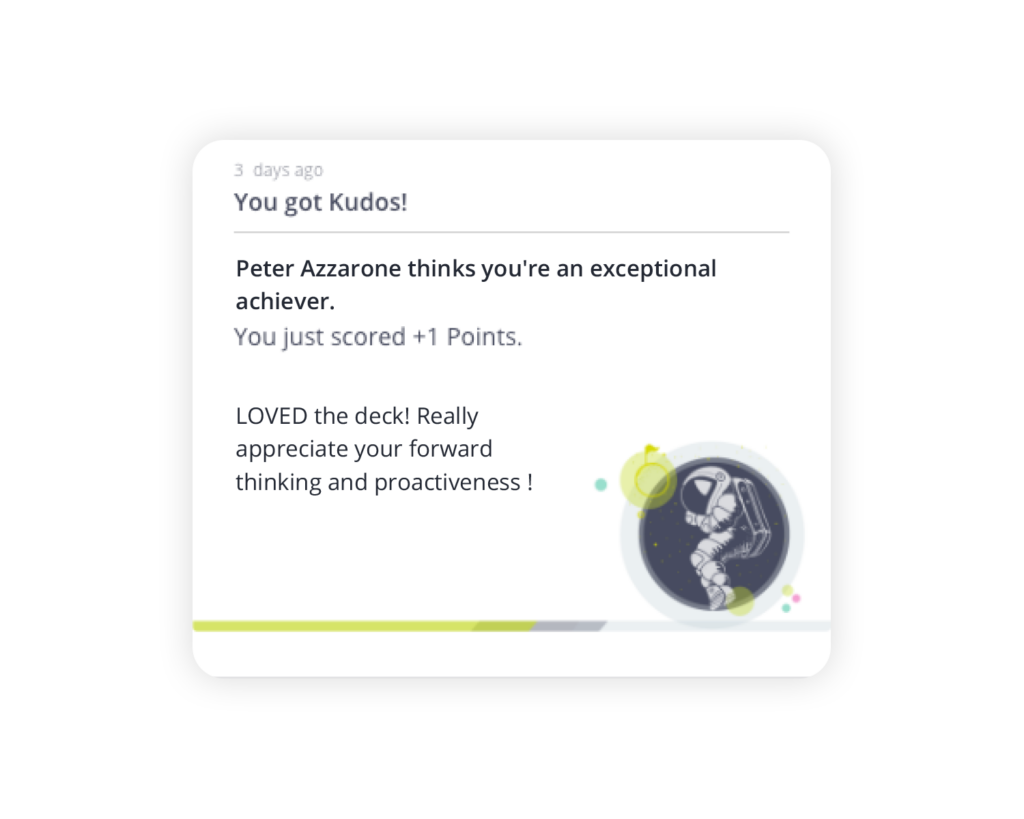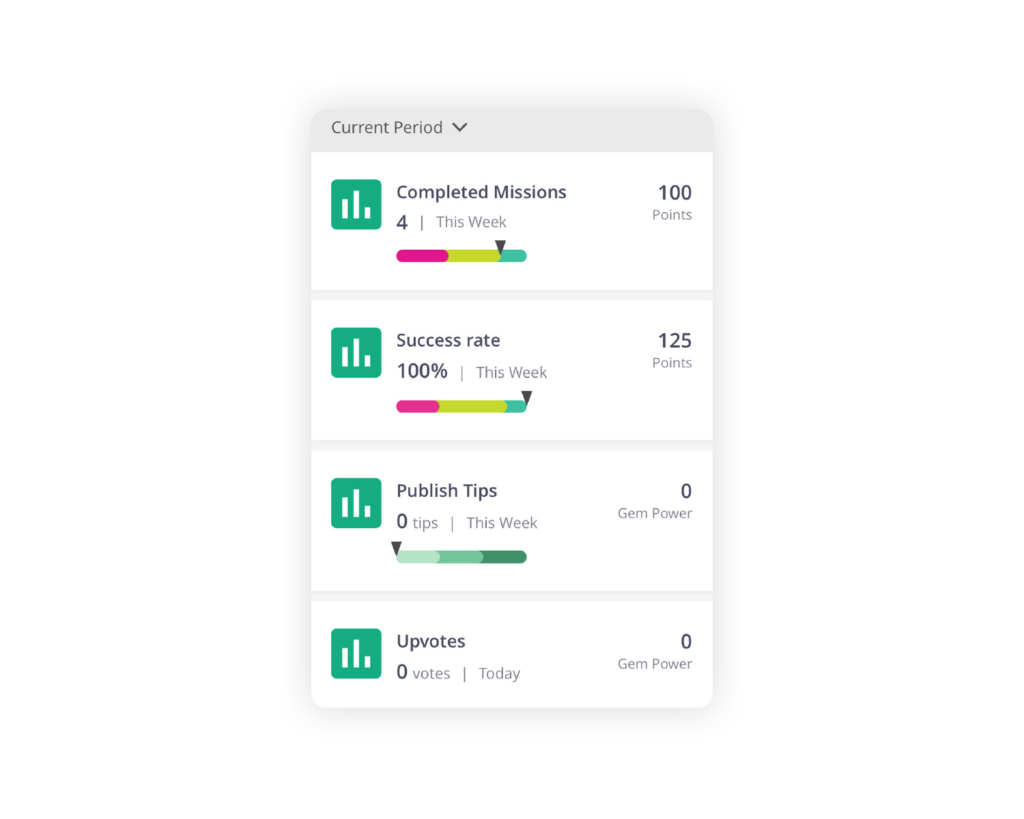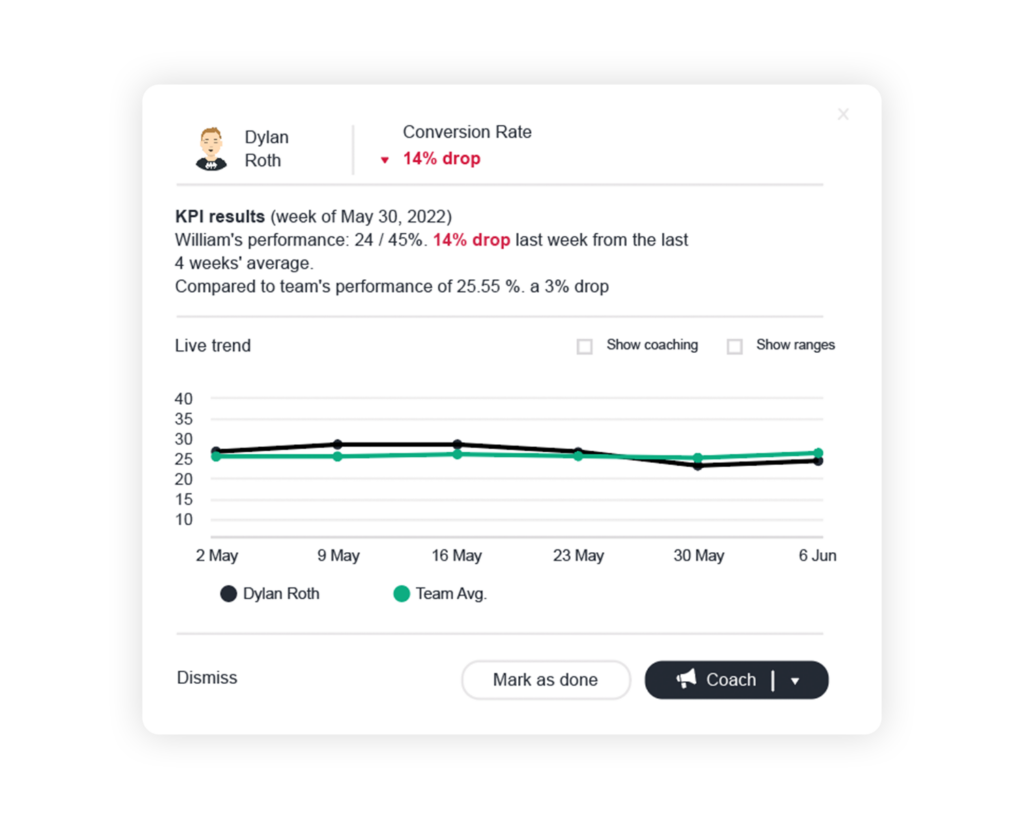Introduction
New Hire voluntary turnover in the contact center is costly: anyone who leaves the organization within the first 90 days of employment will not have returned the costs involved in hiring them.
According to the 2020 Retention Report by the Work Institute, 3 out of 4 employees resign for preventable reasons, with about 40% of first-year turnover occurring within the first 90 days.
Employees cite many reasons for leaving. Some of these reasons are not preventable, but some are.
Gamification of learning during the onboarding process, and the subsequent gamification of performance can improve ramp-up and help deal with many of the preventable reasons for turnover:
- A feeling of inadequacy – in many cases, the first several weeks at a job make employees feel like they are not up to the job. Pacing the demands and enabling quick wins can solve this challenge, as well as teach employees habits of reflection.
- Manager behavior – gamified coaching can nudge managers to consistently coach new hires, providing much-needed guidance and support as they transition into their roles.
- Career development – many employees cite the lack of career development opportunities as a reason to leave. A positive learning experience at the beginning of work can instill a sense of ease in upskilling and upwards mobility in the workplace.
- Job characteristics and well-being – many employees feel overworked, and this perception can hurt engagement during the first 90 days. Encouraging honest reflection on workload and open manager dialogue can help solve this issue.
In this eBook, we will touch on how to use real-time performance management and continuous learning in the contact center, and how a gamified approach to both can address the retention challenge in the first 90 days of work, ensuring employees remain engaged long after.
Real-time performance and gamification: the new way to reflect on performance and create intrinsic motivation
Contrary to conventional wisdom, gamification at work isn’t about replacing work with fun and games. It is about providing employees with real-time visibility into their performance and learning achievements using leading indicators. It also suggests what employees can do next to improve their performance or learning. Presenting this information in real-time and with transparency creates intrinsic motivation. Think of it as similar to counting steps or calories burned: a fitness tracker for work. Getting to the ten-thousand-step mark is always satisfying, and the same hooks can be used at work. Modern gamification doesn’t just focus on extrinsic motivation (i.e. competition) which can be threatening, especially to new hires. Modern gamification is about individual achievements, recognition, and small-step celebrations, which keep employees motivated to perform at their best.
When used to drive up learning completion in the first few weeks on the job, it works like a charm, providing employees the ongoing motivation to consume training content and test their knowledge.
Real-time performance management at the team and manager level also builds better team cohesion, connecting new hire cohorts with each other and their teams from day one, while ensuring managers can guide employee success and prevent early turnover associated with poor manager behavior.
For Learning
Using modern gamification techniques as well as adaptive learning can have miraculous results in terms of learning completion. Instead of participating in long classes, recorded or live, employees are encouraged to complete many micro-learning sessions independently – if their proficiency is lacking in any area, those elements are repeated and reinforced. Using this approach, employees don’t just learn – they participate in knowledge competitions, complete missions, collect points, earn badges, and pass levels, sustaining their motivation to actively participate in the learning journey. Every learning activity is an opportunity to gain recognition and rewards or share success and knowledge with their team via social boards and notifications. Badges and other symbols of recognition demonstrate completion of learning and the competencies that were acquired with that learning, providing a great way to drive job satisfaction and a sense of progress in those first days on the job.
In other words, gamification is an excellent way to encourage people to carry out certain tasks (such as completing details, watching a presentation, or taking a course) and to reward them with a good feeling of personal satisfaction and accomplishment.
Sykes Enterprises’ Latin American unit (Acquired by Sitel Group) was worried about low satisfaction ratings in its classroom-led training. The move to gamified eLearning resulted in a 92% satisfaction rating and reduced on-boarding time by 40%.
For a successful first 90 days, it is best to dynamically offer learning and coaching according to real-time performance data, suggesting the most relevant learning activities and performance support for every employee. Exposing future learning programs in a learning catalog can demonstrate to employees that they can upskill and develop professionally.
For Performance
Anyone working in those first 90 days in a contact center environment would find it difficult to know if they were doing well. Work gets done slowly, and many issues may come up. Taking a real-time performance approach can solve many of these issues. By presenting real-time KPIs for each newbie, they can see how well they are progressing in a “race with themselves” or with their new hire cohort.
Even more importantly, by showing new hires several KPIs they can learn the interplay between the different KPIs and learn how to improve their overall performance, by focusing on a different KPI each time. Also, when a KPI trends downward, a micro-learning session associated with that KPI will be offered, to help close the gap. Similarly, frontline managers are notified using the same system to engage often in a structured way with regards to what requires improvement, or when to provide recognition for performance improvement.
Breaking up those first 90 days
Pre-boarding
After investing In hiring someone, at an estimated cost of thousands of dollars per hire, the worst possible outcome is ghosting. When the amount of job openings exceeds the number of employees looking for a job, some employees accept offers of employment but never show up on the first day of work, they disappear. According to research conducted by Randstad, a global recruitment firm, 43% of Gen Z employees accepted a job only to reject the offer.
This is why pre-boarding using a gamified learning approach is becoming common for many contact centers. Instead of waiting for the first day of employment, employers seek to engage employees in what the company is and what the job is like before the first day. This digital connection before the formal start date will drive emotional engagement and reduce the risk of ghosting, especially for remote work scenarios.
This does not mean sending a series of emails that go into detail about the future role of the employee. It’s about exposing the employee to the company’s culture, the big vision behind it, its mission, and the people who will be the employee’s managers. And doing so in a fun and engaging way.
Using a real-time engagement platform will excite and motivate the employee with micro-learning snippets, from videos, through simulations, fun responses to frequently asked questions, and more. It builds confidence that the decision to choose the company was the right one and provides context and comfort for the employee, making the first few days on the job less stressful. This same approach can also be used to prompt frontline managers to engage with new hires and make them feel that someone is there, eagerly waiting for them to join.
Onboarding
Sometimes, companies spend so much time focusing on recruiting the right people for their customer contact centers, that they forget the importance of onboarding — helping newbies make it through those first nerve-wracking days on the job and feel good about it. If done right, though, onboarding can put new employees on the fast track to productivity, and much more. It certainly takes the sting off those first days on the job and is likely to keep employees happier and more engaged.
Onboarding is much more than speeding up the initial time it takes an employee at a call center to learn how to do their job; it’s also more than orientation. If the onboarding ramp-up is done right the employee will feel empowered with the knowledge and support they need to succeed. If the organization is not setting them up for success, they will most likely disengage and lose confidence in their ability to perform their job well.
4 Ways to Make Your Onboarding Program More Effective
- Use gamified learning
If you were a new contact center employee, would you prefer your training to come in the form of a huge file dumped in your lap by HR, which you are supposed to read, or one that engages you with quick learning sessions, interactive quizzes, rewards for reviewing materials, and uses role-play to show you how to apply them? Well, gamification has an amazing ROI compared to rote completion of these educational materials, regardless of whether the content deals with product information, communication channels, conveying empathy with customers, or handling difficult callers. Since it rewards learning by emphasizing the completion of small chunks of learning tasks, employees tend to complete many more tasks compared to just looking at printed material, videos, or presentations.
- Create quick wins – Onboarding is all about ‘beginner level’
It may not be obvious, but 99% of the people reading this have experienced game onboarding. A good example is any digital game you ever played, be it Candy Crush Saga, Angry Birds, or Temple Run, where you kick off play at an easy, beginner’s level. The secret behind the success of these games is that they tap into the habit-forming, innate desire to win quickly and to do anything possible to experience the cues that signify that one has completed a level. Each beginner level refers to a core ability (creating sets of three or more candies, using a slingshot to launch birds at pigs, jumping over objects to escape demonic monkeys) and players enjoy the satisfaction that they are independently mastering a skill.
One of the most common causes of attrition is employees misunderstanding their job expectations. Avoid post-hire shock and ensure that all new hires are given clear instructions on their day-to-day responsibilities and job functions.
- Don’t underestimate quick wins in the onboarding period
This is the way to form work habits. These habits will be key to job performance. Quick wins also ensure that employees are trained one skill at a time and that a sense of mastery and autonomy (“I know how to do this well!”) is achieved, driving employee engagement and satisfaction.
- Use the power of teams and social proof
Another way to optimize onboarding through gamification is to create team-based competitions around learning the training material and completing tasks. Encouraging teamwork between new hires, and sharing a similar stressful and challenging experience builds camaraderie early on and has highly successful results. We’ve seen that reaching 100% of course material completion is definitely doable while creating stronger bonds between team members along the way
First days on the job – the right goals and the right learning
Contact center onboarding should be phased, enabling early success, with continuous ongoing learning to provide room for growth. Several contact centers we have spoken to placed new employees in the customer service channels that are less complex, such as social networks or email, where there are no immediate responses to deal with. With time, employees move into more intricate customer service channels, such as answering calls and dealing with technical problems, which require more knowledge and experience.
The key here is to guide the success of new hires, or people with similar backgrounds and have them try to beat their personal records rather than feel inadequate by competing with more experienced employees. Additionally, each new accomplishment can be celebrated and special manager attention can be provided to sustain engagement and the motivation to perform.

Recognition and manager behavior
New hires need to know their manager cares about them and recognizes their achievements. They also need more guidance. Centrical provides frontline managers with many cues and guidance about how to best coach their employees. This ensures managers spend less time trying to understand who needs coaching and in what areas they need coaching, and spend more time providing direct and timely support to those employees.
Managers are prompted to:
- Check-in with surveys about workload and the employee’s general sense of well-being
- Suggest eLearning activities
- Provide feedback about performance as it changes from day to day
- Recognize success
- Drive conversations when employees fall behind or exceed expectations
- Notice when employee performance drops or other signs of disengagement
- Have more data-based scheduled coaching conversations
Conclusion
Attrition is costly because it takes time and resources to redistribute work and find and train new talent. It impacts productivity and morale among employees who stay. Given the insights into factors that cause attrition, you can take steps to remedy this. By concentrating on employee engagement during ramp-up and through meaningful work, goal-setting, and communication of worth, you can inspire better long-term team productivity.
To keep people working for you, be sure you and other members of your management team proactively keep an eye out for signs your employees are disengaged. This won’t just minimize attrition but also allow you to discover new ways to motivate your employees.




 Dalit Sadeh
Dalit Sadeh April Crichlow
April Crichlow Ella Davidson
Ella Davidson Linat Mart
Linat Mart Gal Rimon
Gal Rimon Jayme Smithers
Jayme Smithers Doron Neumann
Doron Neumann Daphne Saragosti
Daphne Saragosti Ronen Botzer
Ronen Botzer Ariel Herman
Ariel Herman